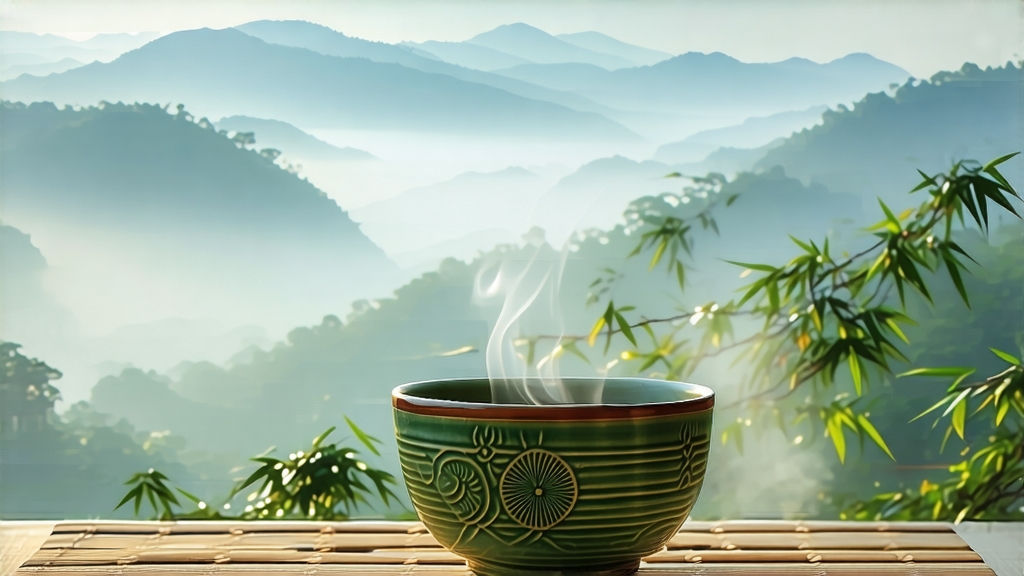
Tieguanyin, literally “Iron Goddess of Mercy,” is the most celebrated oolong on earth, yet its greatest triumph is remaining a living mystery. One sip can taste like late-spring orchids, roasted chestnuts, and mountain mist in the same breath, leaving foreigners and Chinese alike asking the same question: how can a single leaf contain an entire landscape? The answer lies in fifteen centuries of myth, micro-climate, and meticulous craft tucked into the granite folds of Anxi County, Fujian Province.
Legend places the birth of Tieguanyin during the Yongzheng era (1723–1735). A poor farmer named Wei Yin, devout to the Bodhisattva Guanyin, dreamt that the goddess led him to a hidden shrub behind a rusted iron gate in the mountains. Upon waking he found the plant, transplanted it to his field, and discovered its liquor shimmered like liquid jade. Grateful neighbors named the tea after the iron statue in Wei’s shrine, and the moniker stuck: Tie (iron) Guan (to behold) Yin (the goddess). Historians prefer a less romantic chronicle: Qing-era monks at Anye Temple began selecting and refining local tea cultivars, choosing the hardest, darkest green leaves that could survive repeated rolling and charcoal baking—hence “iron.” Both versions agree on one point: from the outset Tieguanyin was never merely beverage; it was meditation made aromatic.
Anxi’s terror is the perfect stage. The county sits on the Tropic of Cancer, but 1,000-metre peaks trap cool mist that slows leaf growth, condensing amino acids and floral volatiles. Granitic soils drain quickly, forcing roots to dive deep for minerals that later translate into the tea’s signature yun—an untranslatable minerality that lingers at the back of the throat like a struck bell. Five micro-zones have achieved cult status within Anxi: Xiping (the mythic birthplace, soft water and lilac nose), Gande (higher elevation, colder nights, tighter fragrance), Xianghua (volcanic red soil, honeyed finish), Longjuan (bamboo-forested, sesame-savory), and Futian (closest to the county town, balanced and commercial). Each village guards its own mother trees; cuttings are grafted, never seeded, preserving clonal identity the way Burgundy guards Pinot noir.
Tieguanyin is not one tea but a spectrum of styles divided along two axes: oxidation level and roasting depth. The freshest expression, “qing xiang” (light fragrance), is barely 20 % oxidized and unroasted, locking in bright green chlorophyll and gardenia notes. “Xiao zhong” (medium roast) spends 12–18 hours over low charcoal embers, developing almond milk and custard tones. “Nong xiang” (heavy fragrance) is 40 % oxidized then baked in bamboo baskets for up to 30 hours across several months, yielding cacao, cedar, and a smoky sweetness that can age for decades. A fourth, increasingly rare, is “laoren tie” (old-man iron), left to naturally re-oxidize in unsealed earthen jars for five years before a final charcoal finish; the liquor turns burgundy, tasting of dried longan, leather, and temple incense.
Craft begins in the pre-dawn chill of late April. Only the standard “yu ye” (fish-leaf) standard—three half-opened leaves and a terminal bud—is plucked. The harvest must reach the village alley factory within two hours; delay triggers enzymatic chaos that no amount of skill can tame. Inside, the leaves are spread 3 cm deep on bamboo trays to sun-wither for exactly 22 minutes, judged by the master’s bare forearm: when skin feels neither hot nor cool but “mountain shadow,” UV has removed the right amount of grassy aldehydes. Next comes “yao qing,” the unique Anxi shake: 2.5 kg of leaves are tumbled in a rattan drum rotating at 18 rpm for 3 minutes, rested for 7, repeated five times. The gentle bruising edges oxidize while veins stay green, creating Tieguanyin’s trademark “green leaf with red border.” Oxidation is halted in a 260 °C electric wok for 90 seconds—just long enough to fix color but preserve enzymes that will later generate lact